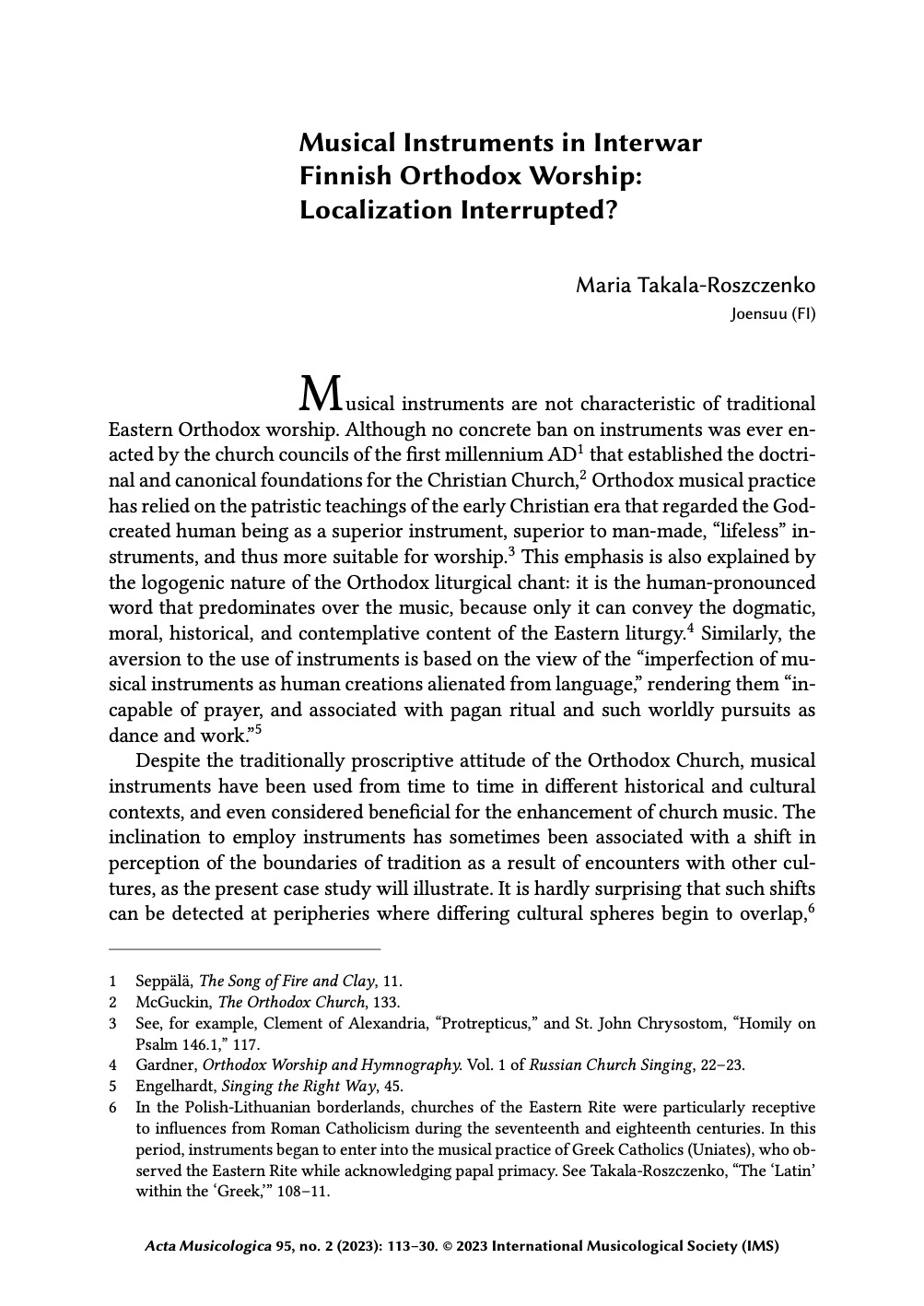Abstract
Musical instruments do not traditionally feature in Byzantine Orthodox worship, but their use has been implemented or attempted from time to time in different historical contexts. This article sheds light on the practices and ideas related to the presence of the harmonium in the liturgy of the Finnish Orthodox Church during the 1920s and 1930s, a period of intense acculturation of the previously Russian-leaning Orthodox minority in Finland. The process is analyzed as an example of musical localization in which the Orthodox positioned themselves within Finland’s prevalent Lutheran culture, noted for its vibrant congregational singing. Instrumental accompaniment was advanced as a means of adapting this singing to a changed situation. Drawing on archival documents and periodicals, the article explores the boundaries of tradition as they were highlighted in the discourse on musical instruments. The eventual rejection of instrumental accompaniment testifies to the enduring strength of the established practice of vocal music in the Orthodox Church.
